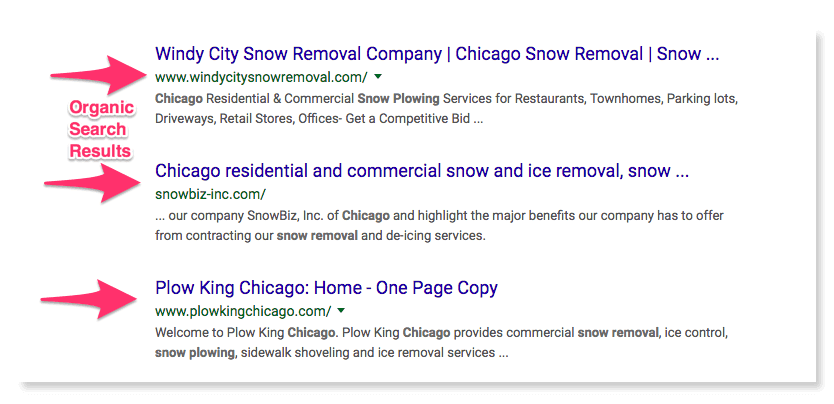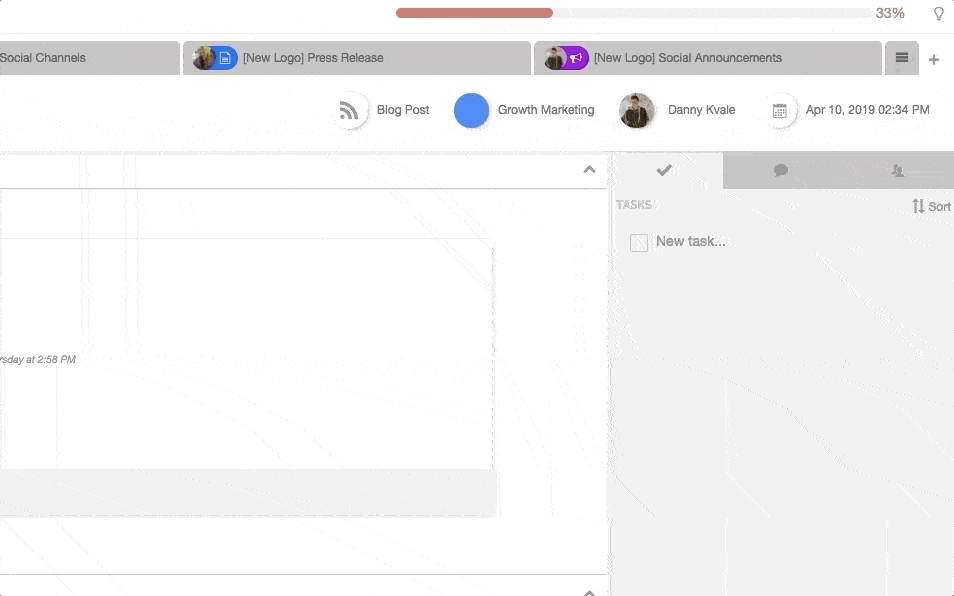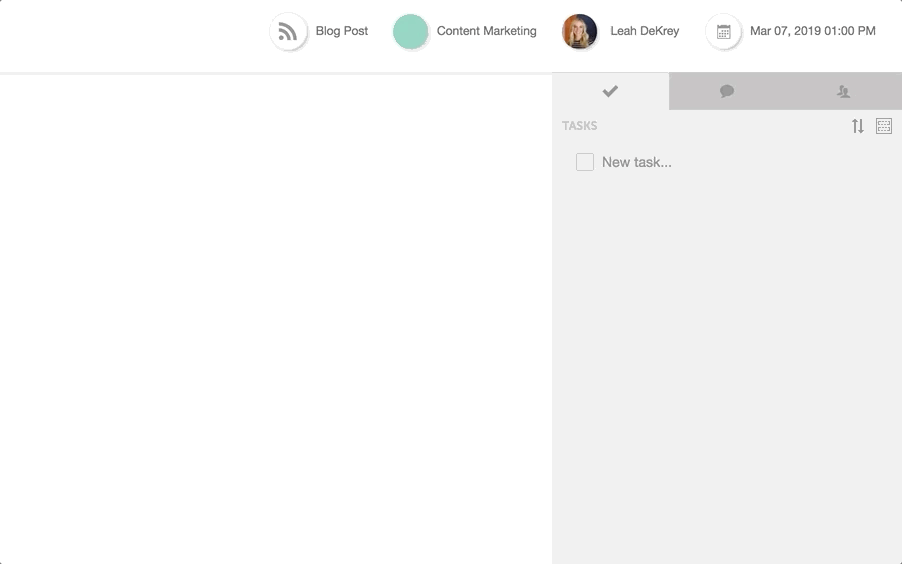Conquer Your Inbound Marketing Strategy with this Process (+ 4 Templates)
 If you’re working in digital marketing in 2020, chances are the majority of your activities revolve around inbound marketing. Many marketing teams take an ad hoc approach to inbound with bits of PPC, content marketing, and social media sprinkled here and there. Rarely do teams have a full-fledged inbound marketing strategy and process in place.
Laying a good foundation and process for your inbound strategy has a couple great benefits.
If you’re working in digital marketing in 2020, chances are the majority of your activities revolve around inbound marketing. Many marketing teams take an ad hoc approach to inbound with bits of PPC, content marketing, and social media sprinkled here and there. Rarely do teams have a full-fledged inbound marketing strategy and process in place.
Laying a good foundation and process for your inbound strategy has a couple great benefits.
- Drive more leads into your marketing funnel.
- Better address target persona pain points.
- Ensure all team members are working toward the same goals.
- Align cross-channel messaging.
- Keyword planning spreadsheet to help drive better results for your inbound activities.
- Content audit guide to help identify your content deficits.
- Content mapping template to map your content to each funnel stage.
- User persona worksheet to help you target the right people.
Conquer Your Inbound Marketing Strategy with this Process (+4 Templates)
Click To TweetWhat is Inbound Marketing?
Let’s start with a quick definition of what exactly inbound marketing is. Hubspot defines inbound marketing as, “A method of attracting, engaging, and delighting people to grow a business that provides value and builds trust.” Think of it this way, rather than trying to push your products to those who haven’t expressed interest in an interruptive way (e.g. TV commercials), inbound marketing aims to attract people who have already expressed a need (e.g. an educational blog post found on a search engine). According to Optimizely, inbound marketing is about earning results organically, while traditional or outbound marketing typically involves paying for results. Here’s where it can get tricky because the definition of inbound versus outbound isn’t as clear as paid versus organic… especially when it comes to SEM and PPC. Some, including Larry Kim, maintain that inbound marketing should revolve around whether the marketing is interruptive.Inbound marketing is any kind of marketing that reaches customers when they go looking for something to buy. – Larry KimHere’s an illustration: You’re the proud owner of a snow removal business. In order to get the word out about your business, you plaster up billboards, buy TV commercials, and send direct mail flyers to people’s homes. This is outbound marketing because you’re interrupting the individual as they go about their normal, daily activities. You have no idea whether or not they need your snow removal services.
 Here’s the alternative: you buy PPC ads on Google for the keywords Snow Removal {City Name}. Your local ad pops up when they search for your service, thus giving them the information they were searching for.
Your marketing was contextual, relevant, and non-interruptive (i.e. inbound).
Here’s the alternative: you buy PPC ads on Google for the keywords Snow Removal {City Name}. Your local ad pops up when they search for your service, thus giving them the information they were searching for.
Your marketing was contextual, relevant, and non-interruptive (i.e. inbound).

Elements of an Inbound Marketing Strategy
Inbound marketing is all about attracting individuals who have expressed purchase intent. You get more bang for your marketing buck because you’re not wasting time, money, and resources on individuals that aren’t interested. Here are the seven basic elements of an inbound marketing strategy that will help you reach the right people, with the right message, at the right time.#1 – PPC (Pay Per Click)
As discussed above, not all forms of PPC are considered inbound marketing. The key is to consider whether or not your PPC marketing is disrupting the activity of the individual.- Paid Search = Inbound
- Pre-roll = Outbound
- Display = Outbound

#2 – SEO (Search Engine Optimization)
SEO consists of activities that aim to help your content perform better in search engine results organically. You work in tactics like link-building, keywords, formatting, website structure, etc. to help search engines crawl and index your content more effectively. This means people will be more likely to find your business without having to pay for ad space.
#3 – Social Media
Social media had its day in the sun. Remember back in 2014–2015 when you could easily reach fans of your business with organic posts? Those days are gone. It has been reported that as little as 2% of individuals following your business on Facebook will see your posts. Social Media is an increasingly pay-to-play platform, which, in a lot of ways, calls into question its applicability as an inbound tactic. For the sake of this post, social media is included, but it’s worth examining your cost to ROI ratio to determine the right amount of effort to devote to these channels. Organic social media is still effective for some types of businesses, like Hootsuite and Buffer, because it's a way for businesses to regularly make posts without the struggle of keeping up to create them.
The amount of money spent to create social media ads continues to climb every year. Organic social media can be a great way for businesses to save money while still promoting their product or service.
Organic social media is still effective for some types of businesses, like Hootsuite and Buffer, because it's a way for businesses to regularly make posts without the struggle of keeping up to create them.
The amount of money spent to create social media ads continues to climb every year. Organic social media can be a great way for businesses to save money while still promoting their product or service.
#4 – Content Marketing
Content marketing is probably the most used tactic of the inbound marketing variety. Content is the vehicle to be found on search engines; it’s what brings in new leads and fills your marketing funnel. Blogs, videos, eBooks, white papers, or whatever option you choose for your content marketing, make sure that it is actionable, educational, inspiring, or entertaining.#5 – Landing Pages
A landing page serves a different purpose for your inbound strategy than a blog post. You’ll want to direct traffic from your PPC ads to a landing page because they are optimized for conversions. If someone is searching for “snow removal Chicago,” you want to make it as easy as possible for them to schedule a call or get a quote, rather than sifting through a long-form blog post. Landing pages also offer a hosting page for you to collect email addresses on gated content like white papers and eBooks.
#6 – Link Building Outreach
Link building is one of the most important and most difficult areas of SEO. Let’s start by explaining why it’s important. A link is essentially a vote. As search engines crawl webpages, they determine if the page is high enough quality to rank for relevant keywords. Aside from looking at the content, they also look for the number of times external sites link back to the page. When a high-quality website links to your content, it tells the search engine that your content is legit.Link building is one of the most important and most difficult areas of SEO.
Click To Tweet This gives you an idea of who is producing articles about your targeted keywords so you can reach out and attempt to get them to link to your site/blog/content.
This gives you an idea of who is producing articles about your targeted keywords so you can reach out and attempt to get them to link to your site/blog/content.
#7 Guest Blogging
If you want to dominate a keyword on search engines, you should try to show up as often as possible for that given keyword — while avoiding competing against yourself. What I mean by that is you don’t want two blog posts or content items competing against each other for the same keyword. This causes the search engine to divide traffic between the two items and will usually result in lackluster results. Recommended Reading: How to Write Landing Pages That Will Boost Your Conversions Providing content on other websites that targets the same keyword can circumvent this problem. It also means that you can expose your brand to an entirely new audience. Win-win!The Best Inbound Marketing Process
Now that it’s clear what tactics will make up your inbound marketing, let’s talk strategy and how to get everything working together and moving in the same direction.Figure Out Who Your Target Customers Are
It’s not enough to say on this step… “we’re targeting small business owners”. You’ve got to really do your research here. The rest of your inbound marketing strategy and process hinges on nailing this step (i.e. don’t half-ass it). By understanding who they are, what challenges they face, and what motivates them, you can create better messaging and increase the chances of covering them into customers. Let’s create an in-depth user persona for our snow removal business. Give the persona demographic and professional info; outline their challenges and motivations and write up a short bio.- Name: Samuel
- Age: 42
- Gender: Male
- Job Title: Partner at an Accounting Firm
- City: Suburb of Chicago
- Income: $200,000/year
- Education: CPA
- Biggest Challenges: Stress, Overworked, Little spare time

Conduct Persona Interviews
What’s even better than brainstorming your target user persona? Speaking to actual customers or prospective customers. This might sound intimidating, but it doesn’t have to be complicated. Simply create a (very) short survey using Typeform, Survey Monkey, or the like. Here are a couple examples of questions you could include:- Describe your challenges in your own words.
- What solutions have you tried before but ended up unsuccessful?
Craft Your Storyline From Customer Challenges
Here’s why understanding your customers is so important to your inbound strategy. Generic blog posts don’t resonate with potential customers because they don’t address their challenges. This creates a negative snowball effect for your marketing. If you’re not addressing customer challenges, you’re missing an opportunity to showcase how your product or service can help, which means your content isn’t selling your product, and less people will come into your marketing funnel. No matter how well you’re promoting your content... No matter how well you’re optimizing your posts for search... None of it matters unless your inbound strategy can attract, engage, and delight individuals. If you want your inbound marketing strategy to be truly successful, make sure you integrate customer challenges into you talking points, content marketing, and marketing automation.
If you want your inbound marketing strategy to be truly successful, make sure you integrate customer challenges into you talking points, content marketing, and marketing automation.
Keyword Research and Topic Domination
Here’s another way your customer research and target personas will drive your inbound strategy forward. Once you gain a deep understanding of who your customer is, you can start creating a massive list of keywords to start targeting with paid search ads, content marketing, etc. Let’s go back to our snow removal example. We know that our user persona, Samuel, is a busy dude. He wants time saving shortcuts and quick access to knowledge. We could also assume that he might not be the handiest of people.How to use purchase intent and education intent to plan your #inbound strategy.
Click To Tweet- Fast snow removal techniques
- Best snow shovels
- Best snowblowers
- Best oil for snowblowers
- Tips for snowblower owners
- How to store your snowblower in the summer
- Snow removal Chicago
Set Your Inbound Marketing Goals
Most marketers know that your goals should be S.M.A.R.T.- Specific
- Measurable
- Attainable
- Relevant
- Time-bound.
- Company’s main goal: $50 million in sales by 2020
- Content Marketing: Bring in 10,000 prospects per month
- Paid Search: $5–8 ROAS (Return on Ad Spend)
Execute Your Content Marketing Strategy
Now that you’ve set your goals and you know what keywords will resonate with your target user personas, it’s time to nail down your content strategy. To start, take all the education intent keywords and map them out on your editorial or marketing calendar. Here’s how you can do it in CoSchedule… Create a new content marketing project in CoSchedule by clicking the plus sign on any day select a day on your calendar. Choose one of the content marketing project types… OR create your own customer project.
Choose one of the content marketing project types… OR create your own customer project.
 After you’ve created the content type on your marketing calendar, you can add and assign tasks to individuals on your marketing team.
After you’ve created the content type on your marketing calendar, you can add and assign tasks to individuals on your marketing team.
 CoSchedule also allows users to create reusable project to-dos with Task Templates.
Simply create your project task list once and add it as a reusable template in CoSchedule. You can add custom due dates and assignees to automatically populate every time you start a new project.
Once you’ve assigned someone a task, they will see the task due date on their calendar, so they know exactly what their priorities are for the week.
CoSchedule also allows users to create reusable project to-dos with Task Templates.
Simply create your project task list once and add it as a reusable template in CoSchedule. You can add custom due dates and assignees to automatically populate every time you start a new project.
Once you’ve assigned someone a task, they will see the task due date on their calendar, so they know exactly what their priorities are for the week.

Content Marketing Tips for Your Inbound Process
On average, conversion rates are six times higher for companies and brands using content marketing than those that aren’t. What if you’re not in that camp? What if you’re constantly pumping out content, but sales and revenue are flat. You’re not seeing your content drive leads like you need it to. You probably have one of two problems. You’re suffering from a traffic trap. This trap is when your marketing team is creating content your audience cares about but fails to convert traffic into customers. Your content is getting great traffic, but revenue doesn’t increase proportionally. You’re stuck in a promotional trap. This trap is when your content marketing is too promotional and fails to connect with your audience’s needs, pains, and interests. Here’s what you can do to fix these problems…Focus on Your Content Core
The content core is the center of where the value of your product intersects with that your audience cares about. Focusing on your content core allows you to go beyond traffic and audience building and actually create content that contributes to the company’s bottom line.
Use the Skyscraper Technique
This is an SEO and content marketing technique that consists of three steps:- Find top performing content by searching for a topic.
- Create better content than the current top performers.
- Try to get a bunch of people to link to your new content.
- Average content length.
- Average number of images.
- Overall quality of content (rank from 1–10).
- Specific keywords/key-phrases used.
By taking stock of top performing content, you can understand what it takes to make your posts rank.
Click To Tweet
Looking At the Inbound Marketing Process From Start to Finish
Who doesn’t love an infographic to explain the end-to-end inbound marketing process? Bookmark this summary for future reference.


